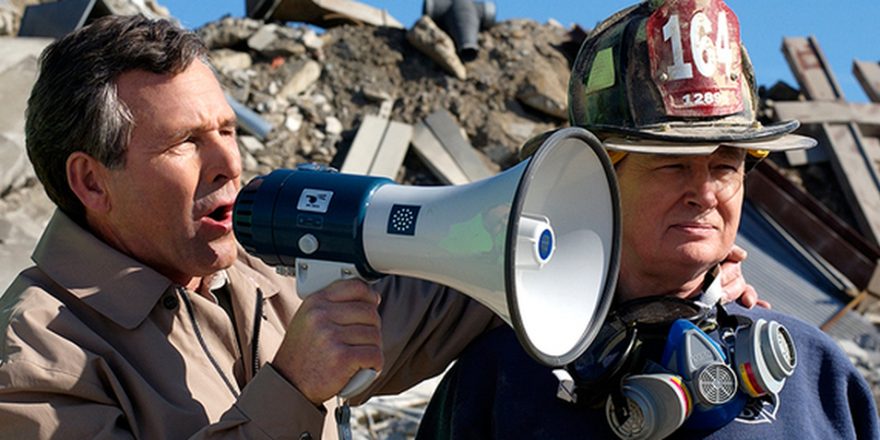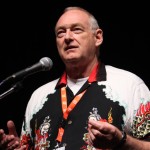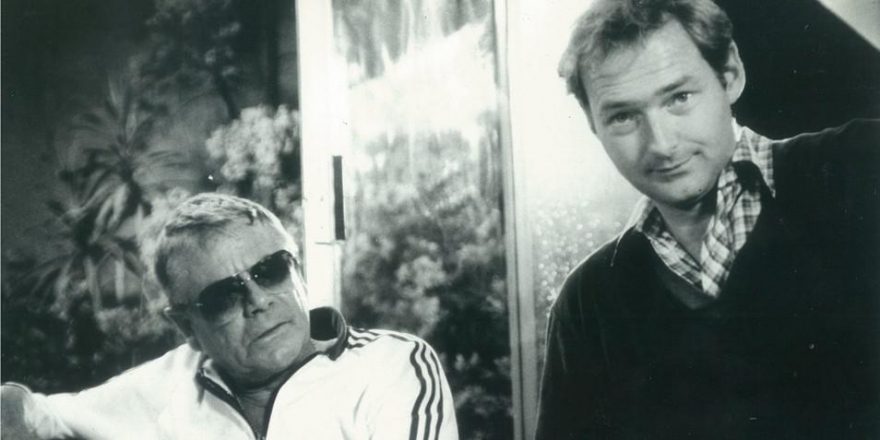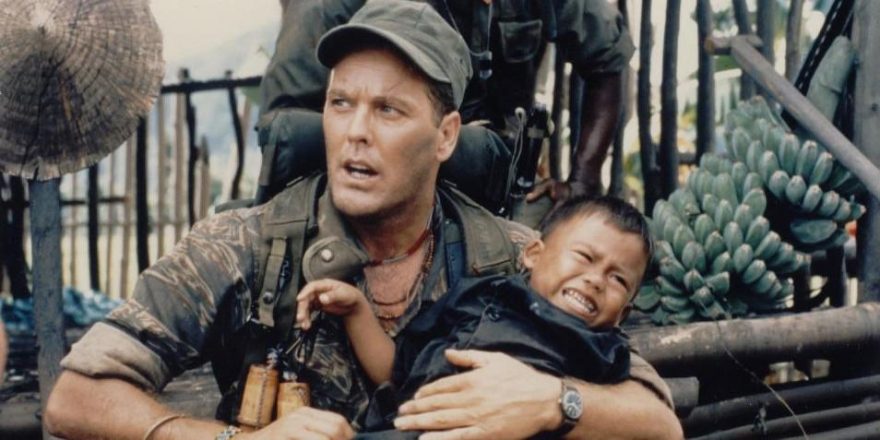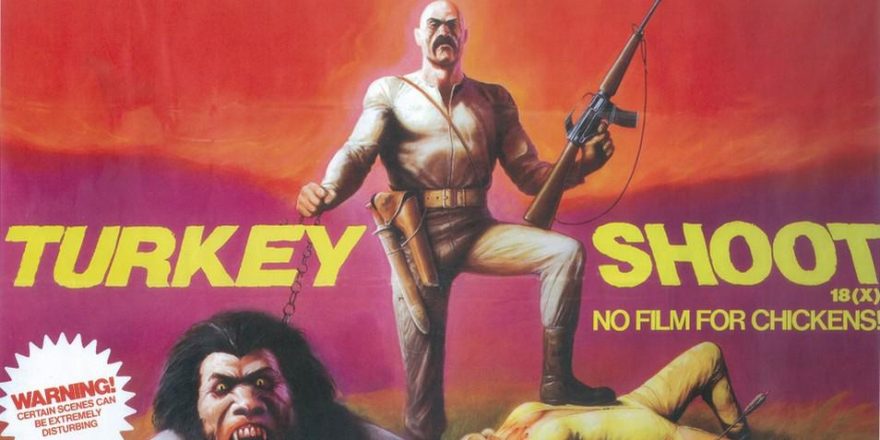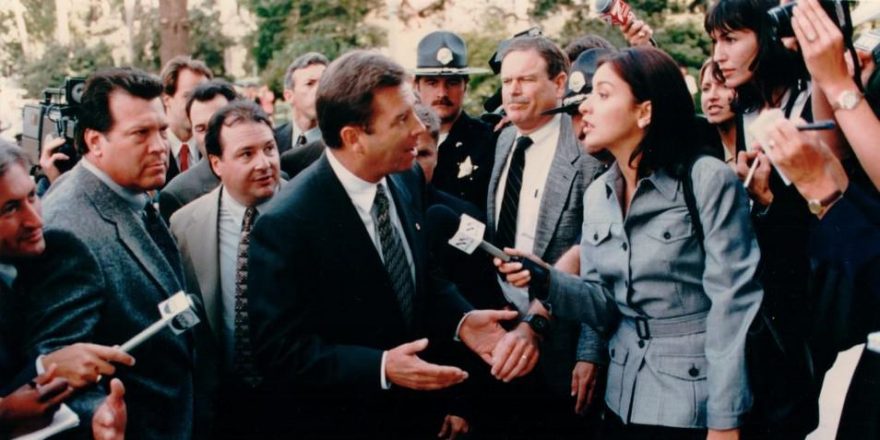I believe Oliver Stone and I have one thing in common: we are the only two directors to have made a film about a sitting administration. Many movies have been made about presidents once they are gone, but films in which actors play the current Commander in Chief and his Cabinet? Not so much.
For six months after making DC 9/11: Time of Crisis, my agents had trouble getting me meetings with network executives. “I’m not hiring the guy that made the Bush movie” was one comment. Another said to me directly, “I can’t forgive you for helping Bush get a second term.” Critics praised or reviled it along party lines. To liberal executives, I became the Leni Riefenstahl of cable movie directors, guilty of making Triumph of the Swill.
But when Jerry Offsay, then Showtime’s president of programming, calls you late at night and asks you to take over a movie shooting in two weeks because the director has fallen ill, you say yes. Even if not a word of the script may be changed (because that was the deal Showtime had to make when acquiring the project), you say yes, regardless of your personal politics. You don’t step aside when a man who greenlit three of your previous pictures comes to you with a problem.
Showtime knew the movie was going to be controversial. To prevent picketing and demonstrations by Canadians unhappy with the U.S. President’s policies, pre-production had started in Toronto under the innocuous title of The Big Dance. Dancing silhouettes graced the company letterhead. Shooting in Toronto had to start in two weeks without fail. Initially Roland Joffé (The Killing Fields, The Mission) had been asked to take over, but he wanted more prep time. In the 1980s, I had taken over three movies when they were already in production, so Showtime came to me, and I was on a plane to Toronto within two days.
Nearly 50 supporting parts were still uncast, some of them requiring lookalikes of Cabinet members and, for instance, fireman Bob Beckwith who accompanied Bush during his “bullhorn” moment at Ground Zero (see above).
My biggest production challenge was the SARS epidemic which broke out soon after I arrived. People began wearing surgical masks while walking the streets. The public buildings we were to use to simulate Washington were suddenly withdrawn as locations on the grounds of public health safety. Someone among the cast and crew just might be one of “the infected …” Things got a little paranoid for a while. When we lost our choice for FBI headquarters at the last minute, I heard of a police procedural TV series on hiatus with a big standing set. Our fearless art department had it re-dressed and ready in the nick of time. How to simulate the rubble of Ground Zero was a major conundrum. Luckily, by the end of the shoot, we found a large demolition site which worked well. Each day was a scramble, but I loved every minute of it.
The docudrama script, written by the producer Lionel Chetwynd, a rare but proud Hollywood conservative, was clearly intended to show how a well-informed, articulate President took charge of government and rallied the people in an unprecedented crisis. Each scene — based on media reports, Cabinet records and handwritten notes taken by Karl Rove and White House Press Secretary Ari Fleischer — was shaped to emphasize the president’s analytical powers and his off-the-cuff eloquence. We have never seen such a whip-smart Bush before or since.
Chetwynd told me that the White House had granted him a 15-minute interview with President Bush to get his personal feelings on the crisis as it unfolded. The conversation ran over. In fact, Chetwynd noticed, as he left the Oval Office, the next scheduled visitor, former U.K. Prime Minister Margaret Thatcher, had been kept waiting for 45 minutes. The meeting convinced Chetwynd that the president’s intellect and grasp of world affairs were underestimated by the media.
The political purpose of DC 9/11: Time of Crisis was to polish the image of the president 14 months before the next election. Many scenes have an issue or spin that continues to divide Left and Right; I hope that the last 13 years gives the film new a perspective. Erik Lundegaard’s Huffington Post article from a few years ago, DC 9/11 is the new Reefer Madness!, sees it as a Monster’s Ball of ideologues, whose pronouncements now drip with dramatic irony.
Iconoclasm is easier if the subjects help.
In his review, J. Hoberman identified which category of Propaganda Tool DC 9/11: Time of Crisis represented: Stalinist “Father of Our Nation” myth movie. But my personal opinion is that propaganda is a double-edged sword. It often reveals more about the propagandists than they realize. With 20/20 hindsight, they might regret some of the hubris liberally sprinkled throughout.
So, Rumsfeld actually said at a Pentagon breakfast on the morning of the attacks: “Something’s coming, something big …”
Bush actually said: “This will decidedly not be another Vietnam.”
Hmm, I wondered, as I read the script over and over, do they really want to be on record as saying some of these things? The Cabinet meeting in the subterranean PEOC (President’s Emergency Operations Center) on the night of the attack clearly shows Bush had his sights set on Saddam Hussein from the get-go. In a way, DC 9/11 is like a Project for the New American Century infomercial, as approved by Karl Rove. I knew I was directing a film that would be vilified by all except right-wing media, yet, with the passage of time, it would have historical value as an authentic example of neocon thought, styled as advocate docudrama. So I wish my film a long and fruitful autopsy.
The invasion of Iraq started during the shoot. It was a little surreal to enter my Toronto hotel room after 14 hours of filming characters in the embryonic stage of planning the Iraq war, then switch on CNN and watch those plans being carried out. Don’t they realize this will not be as easy as they claim? I wondered. They might be blowing up the entire Middle East! The cast, almost all lefties, expressed similar disbelief, but like me, had a duty to honor the contract we signed to shoot the script as written.
The whole cast did a great job. I encouraged each of them to find tone and quirks that could operate beneath the surface of the dialogue. I think Timothy Bottoms convincingly captured the Bush swagger. His performance within a role built from Lego blocks of political exposition is nuanced and masterful. He deserved an Emmy nomination.

I was lucky to get Penny Johnson Jerald as Condoleezza Rice. She had a big part in 24 at the time, but was very good about being shuttled back and forth to Los Angeles. She played Condi with a mixture of personal warmth and steely grace.
John Cunningham nailed the patronizing Rumsfeld. Stephen Macht’s Paul Wolfowitz brought flavor and genuine sincerity to an underwritten part. Karl Rove’s Machiavellian instincts are clearly visible in Alan Royal’s cunning interpretation. I heard later that Mr. Rove did not care for the performance. He joked that he had hoped to be played by Brad Pitt. But I think he got the point.
A sidebar: I am sure the change in director — to a liberal with a few wacky, irreverent movies in his repertoire — was a concern to Rove. Was there a cuckoo in the nest? During the shoot, and for a couple of months afterward, my home phone would make clicking sounds during calls. A number of times during post-production, I would switch on my computer and find my email resorted in a random order. Just a coincidence, of course …

Due to the SARS outbreak, my producer remained in L.A. and vetted dailies remotely. He was generally complimentary and has remained so. None of the subtle embellishments caused a stir. My staging of a Bush Cabinet meeting with the president striding back and forth beside the conference table issuing assignments to his key lieutenants like a brigade commander was ruled a good choice, not ironic hyperbole. I supported Greg Itzin’s smoothly conceited John Ashcroft by shooting a key speech of his in low wide angle. But adjustments were ordered from time to time. Two examples:
A battle I lost in the editing process was not being allowed to reflect the length of time Bush continued to read to the school children after receiving word of the crash into the second tower. I wanted to superimpose a title indicating how many minutes he waited. The word came down from on high: absolutely not. The issue was ultimately glossed over by a dissolve. And in hindsight, Bush was probably right to sit tight and remain outwardly calm till more information had been gathered.
On Day 2, I had allowed Bush to be too angry in a frustrated outburst on Air Force One. “Brian, the president would not lose control like that …” Presidents have human moments too, I countered, to no avail. I had to reshoot parts of that scene on our last day. The eagle-eyed will notice Timothy Bottoms had gained a little weight in the 28 days between wide shot and close-up. The original performance was more truthful, but at least this TV Guide ad found a way to make his situation relatable.

The weight of responsibility on Timothy’s shoulders every day of the shoot was monumental, but he always carried out the brief with dedication and expertise. On that last day, the inner liberal Tim had to bust out. After all, he had played Bush for comedy in the short-lived series That’s My Bush! On the final take of the scene in the Marine One set, while the camera was still rolling, he jumped onto the window seat, pulled down his pants and mooned New York (at that stage a green screen) while uttering a derisive stream of Bush-isms relating to international consensus. Unfortunately, I think those tapes have since been destroyed.
Despite my lifelong leftist voting record, I am not ashamed of taking on DC 9/11. I’ve served clients as diverse as Pentecostal Christians and a gay VOD channel. People other than hate groups are entitled to have their stories told. I’m a professional filmmaker: it’s what I do.



